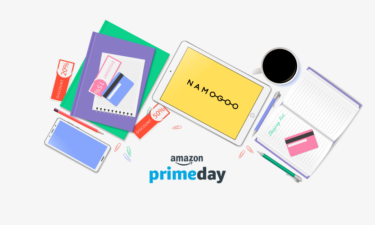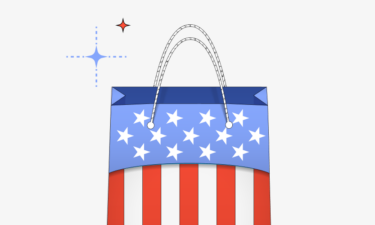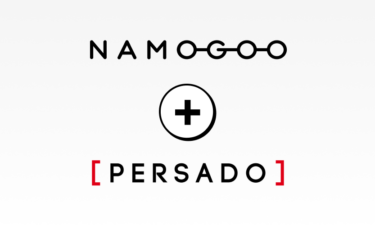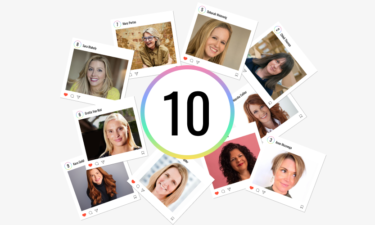SMS marketing is making its way onto the top of the list of priorities for eCommerce teams in 2022, and it’s easy to see why.
97% of Americans have a mobile device[*], and nearly 80% keep that device nearby for at least 22 hours of the day[*].
And when surveyed, 54% of consumers stated that they’re comfortable receiving promotions via text[*], and when texts are received, 95% are read within just 3 minutes[*].
Stack those statistics with the incredible engagement SMS marketing can elicit, and it’s safe to say that text marketing is one of the most promising emerging growth channels.
This article will go over what SMS marketing is, why it needs to be part of your channel mix, and how to craft an effective SMS marketing strategy today.
What is SMS Marketing? A Brief Primer
SMS marketing is a direct marketing channel that entails collecting customers’ and prospects’ phone numbers to send them promotional or educational text messages.
SMS stands for “short messaging service,” so SMS marketing is also known as mobile or text marketing.
Because this channel delivers your marketing messaging directly to your subscribers’ mobile devices, just like any text message you might receive, SMS is one of the few marketing channels that’s been safe from the impact of Apple’s App Tracking Transparency framework.
This has caused growth and marketing teams to take a closer look at mobile marketing.
And when they realize the other benefits of SMS marketing, such as its incredible ability to drive ROI, engagement, and revenue, it’s hard not to make it a high priority for 2022 and beyond.
Benefits of SMS Marketing: Why Text Marketing Needs to Make It Into Your Channel Mix
You’re not alone if your growth marketing team has more campaign and channel ideas in its backlog than time to execute even a fraction of them.
So you need a compelling business case for SMS marketing to rise above the rest of the initiatives on your team’s list of priorities.
This section will go over the benefits of text message marketing to show you why it needs to make it into your strategy.
1. SMS Marketing Delivers a Nearly 30% Conversion Rate
SMS is a relatively new marketing channel, but early data suggests that the SMS marketing conversion rate average is just under 30%[*].
That’s 10x the average eCommerce conversion rate of 2.9%..
All other variables being equal, turning 10x the number of visitors into customers is bound to improve not only your conversion rate but your revenue as well.
Wondering how SMS stacks up against other popular marketing channels?
When compared to Facebook ads, email marketing, and paid search, you can see why many eCommerce brands are prioritizing SMS:

Using the standard benchmark KPIs of each channel, SMS outperforms Facebook, email, and paid search on virtually every metric.
2. SMS Produces an Impressive Return on Investment
Email marketing is well-known for driving a solid ROI, and SMS builds on the success of email by driving even more impressive returns.
Remarkety customers have seen a 20x return on investment from SMS, and a quick Google search will reveal hundreds of case studies of brands that generated incredible returns from the channel.
A comparison of the standard benchmarks from the channels above against SMS, with an assumed net margin of 50% and average order value of $50, illustrates how impressive SMS’ ROI truly is:

$5,000 invested in Facebook ads in this scenario would result in this fictitious brand losing 25% of its investment.
But the same $5,000 invested in text marketing with the same margins and AOV, would result in an 8,500%+ return on investment.
It’s not just the nearly 30% conversion rate driving this forward. SMS has a superpower that most other channels lack that contributes massively to its success, which is engagement.
3. Text Marketing Leads the Way for Engagement
Aside from TikTok, the average engagement rate on social media platforms for organic posts is below 1%.
But even with TikTok, your organic posts will only garnish 3-4% engagement rates. And these numbers are falling year after year, leaving brands with fewer options to capture their followers’ attention.
SMS marketing to the rescue!
According to the email provider Klaviyo, promotional text messages see an average of:
- 95% open rates
- 36% clickthrough rates
- A 187% increase in revenue per recipient from email alone[1].
If you’re anything like me, the 5% of text messages you don’t open are one-time passwords that you delete after using, making mobile marketing one of the highest engagement digital channels in existence.
By doubling down on SMS, you can diversify your marketing channel portfolio and reduce the risk that the next engagement-limiting algorithm update will hit your brand hard enough to hurt because SMS is an owned channel.
4. Reach Your Audience Without Third-Party Data & Platform Limitations
In 2020, when Apple announced its App Tracking Transparency (ATT) feature that was set to launch with iOS 14, it was difficult to predict its impact on businesses that relied on collecting and using consumer data to identify, target, and attract consumers.
A year after the update began to roll out, it has become clear that the impact on eCommerce companies is profound. The size of retargeting audiences is shrinking, lookalike audiences are less similar, and CPMs are through the roof.
And iOS 14 is only the tip of the iceberg. Shortly after the ATT rollout, Apple announced iOS 15, which reduced the effectiveness of email marketing. Google announced its own work to restrict data collection, and many other platforms are beginning to follow their lead.
While the move to a cookieless world certainly makes it more challenging to reach your audience, the workaround has always existed. It’s just more critical now: gather more first-party data from your audience so you can reach them without being limited by third-party platforms.
SMS marketing removes the middleman by allowing you to communicate directly with your customers and prospects.
Your brand owns the data, not a third party, so you can identify each individual, build customer segments, and own more of the customer journey.
5. Recover More Abandoned Carts with SMS
Abandoned cart emails effectively recover abandoned shopping carts, earning eCommerce brands between 3% and 14% of lost conversions.
However, even this established channel has been vulnerable to the wrath of Apple’s privacy and data sharing policy updates, eroding eCommerce brands’ ability to remarket to their bounced visitors.
But as we just went over, SMS hasn’t fallen victim to these updates to the same extent as other channels.
You can leverage the record-breaking engagement of text to recover abandoned checkouts that would have been missed if you were relying only on email.
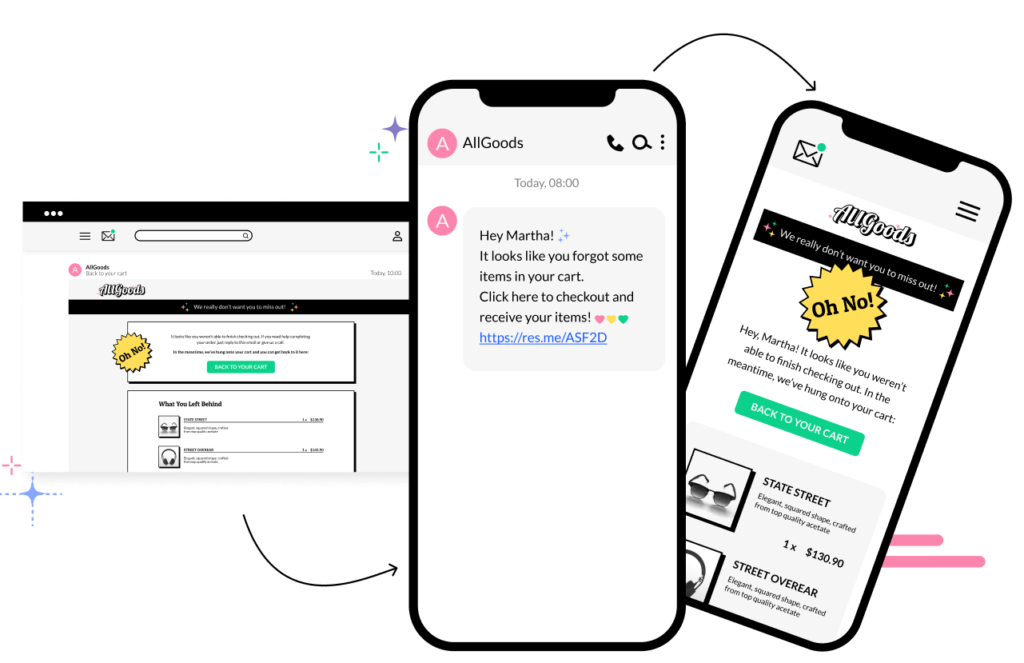
Cart recovery texts are beginning to usurp cart recovery emails by providing a more direct communication channel as well as allowing tracking more freely.
6. SMS is a Convenient Customer Support Platform
Brands need to offer best-in-class customer support to remain competitive and memorable to consumers in today’s eCommerce landscape.
But it’s no longer enough to simply offer friendly service. To truly differentiate your brand, that friendly service needs to happen in real time through the channels consumers are already spending their time on.
And there’s no more convenient channel than text.
Consumers agree that over 70% of online shoppers surveyed responded that they’re more likely to place an online order if the brand in question offers real-time communication via text. 63% would even switch brands if the company provided customer support through text messaging[*].
That makes sense, because answering questions that your visitors have the moment they arise through text capitalizes on the momentum they’ve built with your brand, handling objections and solving concerns when they’re most relevant.
SMS is an intimate, one-to-one communication channel. Consumers are more likely to feel satisfied with the customer service they receive if their questions are answered in a more timely and personal setting.
7. Text Message Marketing Promotes Customer Retention & Advocacy
When it comes to engagement, conversions, ROI, customer support, SMS might seem too good to be true by now.
And while I don’t want to affirm that suspicion, I’d be remiss if I didn’t mention the icing on the cake: SMS can be an effective driver of customer retention, too.
In a HubSpot survey, 93% of shoppers responded that they’re more likely to become repeat customers of a brand from which they received excellent customer service[*], which as we just saw, is one of the unique benefits of SMS.
Incorporating text messaging into your marketing strategy can help grow your customer’s lifetime value, driving repeat purchases by following up with customers to remind them to re-order.
You can leverage SMS to reduce subscription churn, with text reminders before a recurring order is shipped and even allow your customers to manage their subscription through text rather than log in to their account.
When you deliver convenient, personalized experiences both onsite and off, like with text, you can surprise and delight your customers, reduce points of friction that act as a barrier to repurchasing, and lower the likelihood of customer churn.
How to Develop an SMS Marketing Strategy: A 5-Step Framework
Now that you understand the potential of text message marketing let’s go over how to put it into practice. Here’s a five-step guide to crafting your SMS marketing strategy.
Step #1: Create a Mobile Marketing Content Plan
Like email, mobile marketing is a customer communication channel, so one of the pivotal aspects of any SMS marketing strategy is the content you plan to send your subscribers.
So the first step in crafting an SMS strategy is to create a content plan. When you’re crafting your plan, take some time to think about the following aspects:
Use Cases for SMS
While text message marketing is becoming well-known as an excellent customer acquisition channel, as we reviewed above, it can also help brands to provide real-time customer service and nurture existing customers.
Will you utilize SMS just for customer acquisition, or will you leverage it for customer service and retention too?
This information will help you decide what content needs to be created for your content plan.
Lists & Segments
Like with your overarching marketing strategy, mapping out which customer segments you plan to build and target with your text strategy will guide the messaging, promotions, types of content, and optimal timing for your SMS messages.
Include these elements in your plan:
- Desired call to action: It’s helpful to decide on the CTA you’ll be crafting your SMS content plan around for each segment. What is the most valuable action each unique group of subscribers can take? These actions can include both macro and micro conversion events, such as joining your loyalty program or referring a friend.
- Sign-up incentive: What will you offer to this segment to entice them to sign up to receive texts?
- Multiplier: Which metric or KPI can you monitor to give you a sense of how SMS is performing for each segment?

After you’ve determined which lists and segments you plan to build for SMS, you can decide which flows each segment will receive and when.
Content Plan
Like with email marketing, your SMS content strategy should include both automated, evergreen sequences and one-time campaigns.
Below, we’ll go through a quick refresher on the differences between the two types of SMS campaigns, and then we’ll work through how to craft a content plan that encompasses both.
Automated SMS flows, such as drip and nurture campaigns, are sent on a schedule based on when the subscriber took the action that triggers the automation.
You know these from your email marketing program. For example, if I abandon my cart on your site, you might set up an automated flow to send me reminders and (hopefully) recover my cart.
Here are some common automated SMS flows to get the creative juices flowing:
- Welcome
- Cart abandonment
- Browse abandonment
- Post-purchase
- Cross/upsell
- Upgrade to subscription
- Leave a review
- Nurture / loyalty program
- Refer a friend
- Customer winback
The automated flows you choose to include in your SMS marketing strategy should fall from the previous two aspects of your plan – the use cases you decided to leverage SMS for and the lists and segments you’ll communicate with.
Begin to map out your autoresponders, identifying the flows you will start with, the text messages you’ll include in each, the segments that will receive the flow, and the timing of each text:

SMS campaigns are one-time text message campaigns that are manually set up and scheduled to send to a segment you determine ahead of time. These may be referred to as broadcasts or e-blasts in email marketing.
For example, you may send a one-time SMS campaign to announce a new product launch or your Black Friday promotion.
Common campaigns include:
- Weekly or monthly newsletters
- Seasonal sales
- Promotional events
- Product launches
- New content notifications
- Back-in-stock reminders
- Customer feedback requests
- Pre-order events
- Segmentation campaigns
Like with autoresponder sequences, the specific campaigns you include in your plan should result from the use cases and segments you’re building your strategy around.
Pencil in your first few SMS campaigns along with the segment and timing as you did with your autoresponders:

As you’re mapping out your content plan, consider how SMS will fit in with your email marketing campaigns.
SMS marketing and email marketing are two powerful channels for delivering personalized messaging—the duo should complement each other. But keep in mind that some of your SMS subscribers will also be email subscribers, especially if you double-up and collect both pieces of contact information in the same form.
So slotting in your email flows and campaigns into your SMS plan can help you identify problematic timing that may result in a subscriber receiving an email and a text message at the same time.
Once you’ve planned your SMS content, you’ll move on to setting objectives for your shiny new marketing channel.
Step #2: Set Targets Against Which to Measure Your SMS Marketing Success
A successful SMS marketing campaign starts with goal setting. Here are some tangible goals to choose from:
- Generating more sales
- Marketing new products
- Recovering lost sales
- Event updates
- Timely reminders
- Post-purchase texts
- Gathering customer feedback
- Quick customer support
Note: You can combine some goals. Ex: driving sales by obtaining customer feedback.
The first step of developing any strategy is to set targets against which to measure your success. You can choose to set goals for this new channel or opt instead for setting objectives and key results, depending on which framework your company uses.
Objectives and Key Results (OKRs) is the goal-setting strategy of Google, Intel, and dozens of other top-performing companies. We recommend setting OKRs because objectives zoom out of specific goals and instead focus on the desired outcome to break down what needs to be achieved to reach the objective.
Below, I’ll show you how to set both objectives and key results to launch your SMS marketing strategy on the best foot possible.
Objectives
Your objectives determine how you’ll measure the success of your strategy. Aim to set objectives that encompass the desired outcomes of your strategy.
Avoid setting single-metric objectives, like “Reduce cart abandonment rate by 10%.” While these are understandable goals to set your sights on, single metric improvements will be captured in your KPI targets.
Some example objectives for an SMS strategy include:
- Improve customer engagement through personalized SMS communications
- Improve customer journey continuity through an optimized conversion funnel
- Boost customer retention and reduce churn with best-in-class customer success
- Increase eCommerce channel profitability and ROI
Each objective encompasses many other conversion goals, and will necessarily lead to improvement across the board if it’s achieved.
Key Results
“Key Results benchmark and monitor how we get to the objective. Effective KRs are specific and time-bound, aggressive yet realistic. Most of all, they’re measurable and verifiable.” [*] – John Doerr, Measure What Matters
If your company follows a more traditional goal-setting framework, key results align with what might be considered goals. Set key results that will help you reach the objective of your SMS marketing strategy.
Using the same objectives I used in my example, below we’ve noted the conversion KPIs that’ll help you measure your progress and how effective your SMS strategy is.
The key results that you set around these metrics will be unique to your industry, product, customers, and the specific objective you set. Still, by constructing your key results around these KPIs, you’ll ensure that you’re building a sustainable, profitable strategy.
- Improve customer engagement through personalized SMS communications
- CTR
- CVR
- CLTV
- Discount rate
- Cart abandonment rate
- Cart recovery rate
- AOV
- ROI
- Time to purchase
- Improve customer journey continuity through an optimized conversion funnel
- CVR
- New vs. repeat visitors
- Cart abandonment rate
- Cart recovery rate
- Repeat purchase rate
- CLTV
- Boost customer retention and reduce churn with best-in-class customer success
- CLTV
- Repeat purchase rate
- Increase eCommerce channel profitability and ROI
- RPV
- Discount rate
- AOV
- Shopping cart abandonment
- CVR
- ROI
After you’ve set the objectives and key results or goals, if that’s the route you chose, you can move on to the fun part: mapping out your SMS acquisition plan.
Step #3: Map Out Your SMS Acquisition Plan
Your SMS acquisition plan, or how you plan to acquire phone numbers that will make up your SMS subscriber list, is a critical aspect of your mobile marketing strategy to get right.
After all, you need subscribers to divide into the segments you set earlier, who will then receive your future marketing texts.
In this step, you’ll create a plan to document the channels and incentives you plan to use to acquire SMS contact information.
Like with your content plan, these details should come from the use cases and audience segments you set in Step #1.
SMS Acquisition Channels
Growing your SMS subscriber list is similar to how you might approach email acquisition. In this part of your plan, map out the specific channels you plan to use to acquire phone numbers from your audience.
Some common channels through which brands acquire leads include:
- Onsite
- At checkout
- Embedded forms
- Pop-up campaigns
- Customer accounts
- Live chat
- Email
- Inviting existing email subscribers to subscribe to SMS
- Post-purchase
- Order & shipping updates
- Referral programs
- Subscription updates
- Review requests
- Customer support channels
- Social media
- Cross-promotion
- Social media ads
- Co-branded giveaways
- Content
- Blog articles
- Podcast
- Video
- Partnerships
- Affiliate campaigns
- Influencer promotions
- Co-marketing partnerships
SMS Subscription Incentives
It’s no surprise that providing an incentive to encourage visitors to subscribe to your email list is a best practice. Consumers want something in exchange for their contact information and are unlikely to give up their emails to get “updates.”
This eCommerce best practice holds true especially when you’re asking users to sign up for SMS because a phone number is the most direct communication channel for many people.
When you’re mapping out your SMS acquisition plan, you’ll need to ensure that your subscription incentives are valuable enough for your audience to part with their phone numbers.
In this part of your SMS strategy, you’ll align your content plan from step #1, plus your objectives and acquisition channels with the incentives you’ll offer to encourage SMS sign-ups.
I’ve included some popular incentives per channel below, but only use this as a guideline. The incentives that work for your brand will depend on your products, industry, customer segments, and the purchase intent of each individual visitor.
- Onsite
- Personalized conversion incentives
- Daily giveaways
- Email
- Discounts for future purchases
- Free shipping
- Post-purchase
- Discounts for future purchases
- Customer loyalty rewards
- A free product on the next order
- Upgraded order
- Social media
- Sweepstakes or a giveaway
- Sales promotions
- Lead magnet
- Content
- Lead magnet
- Quiz or consultation
- Sweepstakes or a giveaway
- Sales promotions
- Personalized conversion incentives
- Partnerships
- Co-branded giveaways
- Lead magnet
- Sales promotions
Your plan does not have to be set in stone. You can and should A/B test different incentives to discover the best-performing offers when your campaigns are live.
As Benjamin Franklin said, “if you fail to plan, you plan to fail.” Having an idea of the incentives you’ll use to grow your SMS subscriber list will take the guesswork out of “where to start”.
Step #4. Set a Budget & Choose Your SMS Tech Stack
Delivering marketing messages to mobile users via SMS requires the right technology. And since this is a relatively new marketing channel, selecting the right providers and crafting your tech stack might seem daunting.
Fortunately, we’re here to help. There are two main capabilities you need to execute a mobile marketing strategy:
- A lead generation app: To collect phone numbers from your visitors, you need a lead generation app that enables you to collect and incentivize SMS sign-ups through promotional offers (ideally personalized).
- SMS service provider: Like you need an email service provider to do email marketing, you need an SMS provider to act as a messaging platform where you can schedule campaigns and automate your drip series.
Some SMS providers are capable CRMs for SMS and lead generation solutions, but not all.
On top of these two basics, there are a few different types of apps and technology you may require depending on your company, including software development kits (SDKs), services, interactive voice response (IVR) systems, gateways, bulk SMS aggregators, CRM platforms and more.
The specific software solutions you choose should fall from your marketing plan and the goals or OKRs you set for the channel. For example:
- If you want subscribers to text in their email address or opt into a mailing list, seek an SDK that supports forms.
- If you want SMS subscribers to respond to you with their name or question you’re asking for the purpose of segmentation when they receive a text from your company, then IVR technology is required so you can record responses and engage in conversations over text.
- If you want to push each message to its full potential and personalize your texts, you’ll need to find an AI-driven personalization platform like Intent-Based Promotions.
Every SMS software provider has different pricing structures, so the one you choose will depend on the capabilities required by your company, and the budget you set for the channel.
When you’re evaluating your options, look for solutions that deliver texts fast, offer shortcodes, are feature-rich (ensure the tool has auto-reply, message scheduling, automation, etc.), and offer detailed reporting so you can tweak and improve your campaigns.
Step #5. Plot Out Your SMS Compliance Infrastructure
Launching a successful SMS strategy requires some forethought around your brand’s SMS infrastructure.
During this phase of developing your strategy, you’ll lay out your blueprint for a foundational piece of the mobile marketing puzzle – how you’ll remain compliant with regulations around SMS marketing.
There are a number of agencies that act as a regulatory body for SMS marketing and communications.
In the US, these include associations such as the Cellular Telecommunications Industry Association and the Mobile Marketing Association (MMA), as well as federal agencies like the FCC and FTC.
These organizations regulate SMS compliance and, in the case of the federal agencies, enact and enforce laws with the purpose of protecting consumer privacy.
The principal regulations around text message marketing in the US are governed by the CAN-SPAM and Telephone Consumer Protection Acts, and I’ve included a list of the main focus areas below.
However, SMS regulations vary based on geographical location, so keep this in mind if you’re not a US-based organization.
And of course, the fine print. The information provided in this article is not a substitute for a consultation with your compliance team and should not be construed as legal advice.
Here are some general text marketing regulations:
- Collect “Express Written Consent”. You don’t have to have your visitors write a letter of consent and mail it in, but you do have to gather consent from new subscribers via either a checkbox or by having them text a specific phrase or word to opt-in.

- Ensure Terms & Conditions Are Readily Available. Your legal team should be able to work with you to craft legally compliant terms and conditions for your SMS program. It’s crucial that you ensure that these are easily searchable and readily available for your subscribers to review at any time.
- Include Your Organization’s Prefix in Texts. When you receive an email, you usually know exactly who sent it. You can see the sender’s “from” name, and if it’s still unclear who sent it to you, the body of the email will usually clear that up. That’s not the case for text messages; if you don’t have the phone number saved in your contacts already, the only way to identify the sender is for them to tell you who it is explicitly. This is why most marketing texts include the brand’s name before any of the text content.
- Communicate Your Plan Up Front. It’s important to be clear about how you will use your subscriber’s phone numbers. What types of content will you send them, and how frequently? Spell this out on your SMS subscription form to set expectations.
- Include Opt-Out Details in Every Text. Like with email marketing, every marketing text message needs to include instructions on how subscribers can unsubscribe from SMS.
- No Sending During “Quiet Times”. Across most of the US (though it varies by jurisdiction), the hours between 9:00 pm-8:00 am are considered sacrosanct. You can’t send marketing messages during this time period, to avoid disrupting consumers. Transactional text messages, such as order confirmation texts are compliant even during these times.
Bottom line: Work with your company’s compliance team or lawyers to construct an SMS compliance policy to adhere to the laws in the regions you service.
Launch Your SMS Marketing Strategy for Sustainable Long-Term Success
SMS is a promising emerging marketing channel with incredible engagement, an impressive ability to drive revenue and conversions, and a keen aptitude for delighting customers.
eCommerce teams are smart to prioritize SMS in their marketing plans.
Like with the implementation of any new marketing channel, your output can only be as strong as your inputs. Taking the time to understand and plan around the opportunities, weaknesses, and factors that make SMS unique will help you launch a bulletproof text message marketing strategy to pave the path to sustainable, long-term success.




